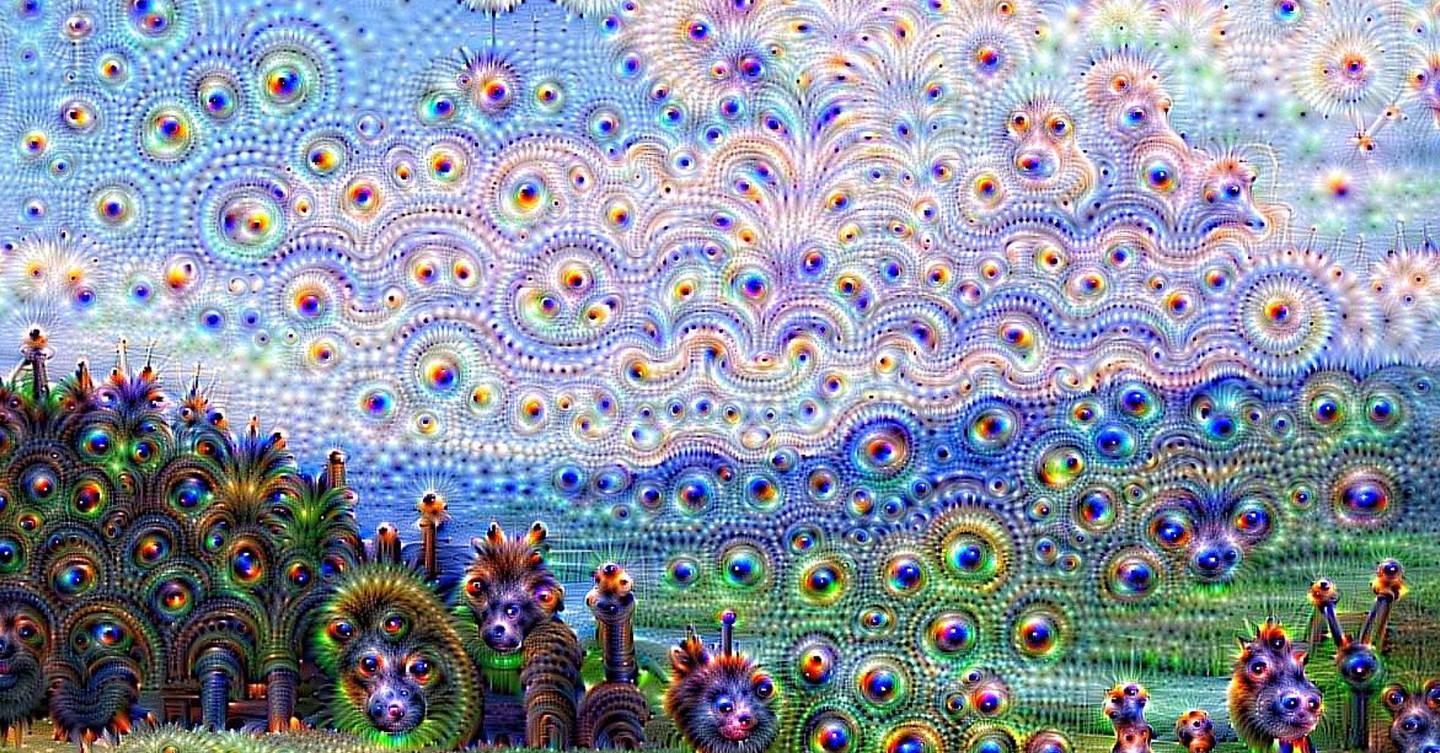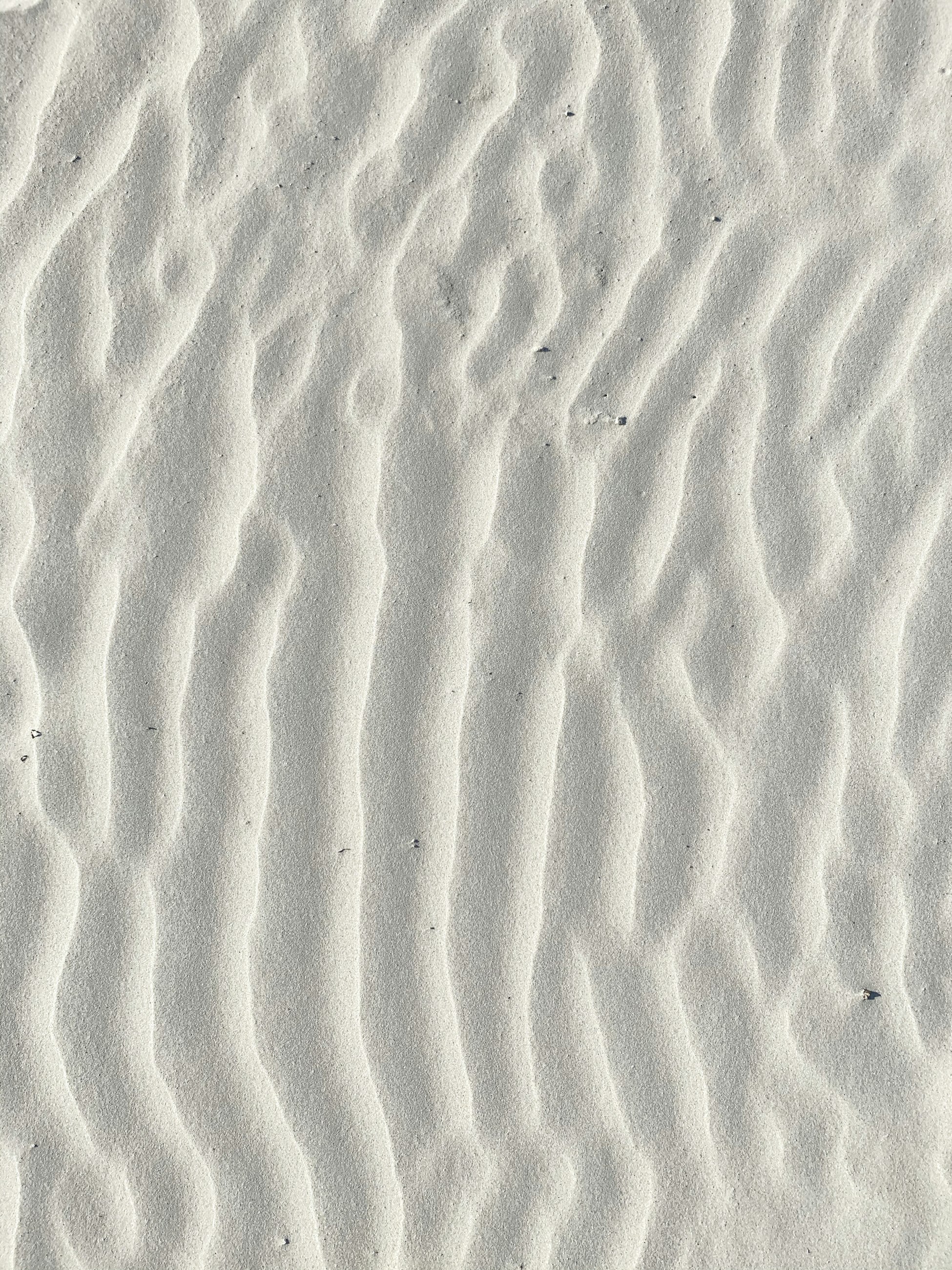“You can’t use up creativity. The more you use, the more you have.” - Maya Angelou
This week’s letter is a little delayed due to being on vacation and trying to get in as much beach time before the tropical storms come. But it is always empowering to listen to the ocean and the sound that it makes. I mean the very nature of chaos that it controls due to the power of the waves is astounding. The way that nature can shape and form all due to the system in which it has been set up, controlled, or becoming what it is.
You see the patterns even in the sand. The organic nature of the patterns that they create. There will probably never be a situation in which every one of the grains of sand that are part of this image that will be in the exact same place at the exact same time. It is mystifying how impossible true randomization and with still the laws of a system create something simple but yet also beautiful.
Photo by Erwan Hesry on Unsplash
Inspirations
🖌️ Unconventional Media
There are so many beautiful things about the work that Dr. Neri Oxman has done with architecture and natural materials. Here I’ve added a few videos of her collaborations at MIT and the insane wonder that the pieces that they have been able to create.
{{youtube 9HI8FerKr6Q}}
A unified approach to grown structures.
The video shows 15 different variations of one computational growth process. Based on this process we created a series of 3D printed wearables in cooperation with Prof. Neri Oxman from the MIT Media Lab.
{{ youtube CVa_IZVzUoc}}
Designer and architect Neri Oxman is leading the search for ways in which digital fabrication technologies can interact with the biological world. Working at the intersection of computational design, additive manufacturing, materials engineering and synthetic biology, her lab is pioneering a new age of symbiosis between microorganisms, our bodies, our products and even our buildings.
📸 Generative Graphics
I find that some of Juliens work is very simple but also complex. He does a fair amount of plotting using a plotter so as you peruse his work there are a lot of simple two-tone works that are algorithmically created. Simple, straight forward but beautiful to the eyes.
https://imgur.com/gallery/vYIayN3
Here are a few more of the works that he has recently placed on Twitter. Check him out, follow him.
https://twitter.com/v3ga/status/1320297942880747521?s=20
https://twitter.com/v3ga/status/1318813926793056256?s=20
🚤 Motion
{{youtube vI8rKFvLodY}}
Algorithms and rule sets are the ground for generative art – Artistic creation often starts with a conscious choice of these rules, but isn’t limited to any medium, topic, technique or philosophical context. Questions of order and chaos are intrinsically linked to these rules and determine its philosophical proximity to complexity theory (Stephen Wolfram and others). Generative art is either outcome or process of an artistic production based on autonomous systems – thus excluding human spectator agency. Interactive art, on the contrary, is based on spectator-ship agency. Interactive art is per definition either the process or creative result of inter-subjective human art generation. In generative art rules create art, in interactive art the absence of rules defines human interaction.
🔖 Articles and Tutorials
Procedural / Random Generative Modeling Technique, Pebbles and Star Fish
Node-Based is where one can simply connect a bunch of nodes to process input values and getting output values as desired. While Proceduralism, in my understanding is a series of interconnected step by step instructions or algorithm which can give one the ability to modify and generate variations of different outputs by modifying a set of parameters and values, without having to recreate things from scratch each time or deleting history or other destructive processes.
An interesting article on using Blender to generate some very interesting pieces of procedural 3D modeling space.
How to Create Generative Art in Less than 100 Lines
Generative art, like any programming topic, can be intimidating if you’ve never tried it before. I’ve always been interested in it because I love finding new ways that programming can be utilized creatively. Furthermore, I think anyone can appreciate the concept of artwork that literally creates itself.
Creative Tools to Generate AI Art
If you’re interested in using AI in your creative practice, the apps, software and tools above are a great place to start. Even if you have no machine learning experience, you can start with some of the simpler tools and expand from there. Use AI photo editing tools like Deep Art, an AI art generator like Deep Dream Generator, an AI image generator like Artbreeder (a.k.a. GANBreeder), an AI painting generator like AI Painter, a AI cartoon maker like Cartoonify, or draw with a neural network using Quick Draw.
This is an informative resource page on using machine / deep learning to generate interesting pieces that can be used as a tool to generate more nuanced artwork or outputs from models such as the DeepDream images that look like the following.

Photoshop’s AI neural filters can tweak age and expression with a few clicks
Artificial intelligence is changing the world of image editing and manipulation, and Adobe doesn’t want to be left behind. Today, the company is releasing an update to Photoshop version 22.0 that comes with a host of AI-powered features, some new, some already shared with the public. These include a sky replacement tool, improved AI edge selection, and — the star of the show — a suite of image-editing tools that Adobe calls “neural filters.”
Courses
https://imgur.com/gallery/XJKUQvU
Getting Started with Touch Designer
This class is to show you the basics of using TouchDesigner. In this short class, we will get started with a simple generative art project to get to know the software. You will learn the interface, the basic foundation of creating projects in Touchdesigner, and how to go from a simple animation project to an interactive one where users can play with the visuals.
Great starting tutorial on using TouchDesigner. You will need a subscription to SkillShare, however if you have never used it, they will give you a 14 day trial to use. Generally you should be able to get through at least one course in that timeframe.
Books
Generative Art: A Practical Guide Using Processing
Generative Art presents both the technique and the beauty of algorithmic art. The book includes high-quality examples of generative art, along with the specific programmatic steps author and artist Matt Pearson followed to create each unique piece using the Processing programming language.
Processing has been the framework that I’ve used the longest and have the deepest respect. The book also provides much inspiration of what can be done, and generative mind frameworks that can be used to further the creativity using algorithms found in nature and other mathematical intuitions such as fractals ad pseudo-random processes.
